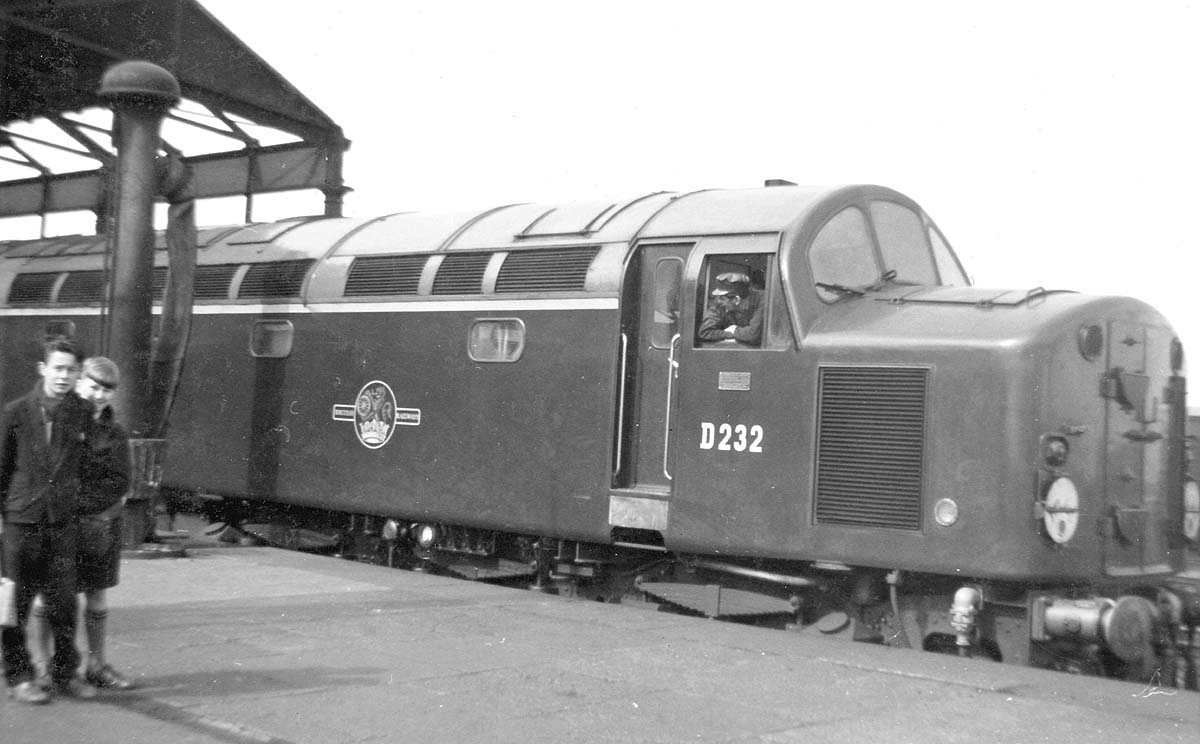 |
|
London North Western
Railway:

Midland
Railway:

Stratford
Midland Junction Railway
|

|
LMS Route: Rugby to Wolverhampton
LMS Route: Rugby to
Leamington
LMS Route: Rugby to Tamworth
LMS Route: Rugby to
Leicester
LMS Route: Rugby to Market Harborough
Rugby Station: lnwrrm2996
 |
English Electric Type 4 Diesel Locomotive 1Co-Co1 D232
stands at Rugby with a down express during Easter 1960. Built by English
Electric's Vulcan Foundry works in September 1959, D232 was to remain in
service until February 1981 when it was withdrawn from D09 Manchester Division
to be scrapped by Swindon works. The Class were built by English Electric from
1958 to 1962 and eventually numbered some two hundred locomotives. Direct
comparisons on the Great Eastern mainline showed that when well driven, they
offered little advantage over the 'Britannia Class' steam locomotives, and
therefore the Eastern Region declined to accept further machines as they deemed
them unsuitable to replace the Pacific steam locomotives on the East Coast Main
Line preferring to hold on until the 'Deltic', (Class 55) diesel locomotives
were delivered. The London Midland Region was only too pleased as the Eastern
Region's decision released additional locomotives to replace their ageing steam
fleet. The class managing Camden bank, just north of Euston, with apparent
ease. The West Coast Main Line had been starved of investment for many years
and the poor track and general lower speeds - when compared to the East Coast
route - suited the class as the need to hold trains at speed for long periods
simply did not exist and it better exploited their fairly rapid acceleration.
They were for a time the pride of British Rail's early diesel fleet. Despite
their initial success, by the time the last examples were entering service they
were already being replaced on some top-link duties by more powerful
locomotives. As they were slowly relegated from express passenger uses, the
type found work on secondary passenger and freight services where they worked
for many years, the final locomotives being retired from regular service in
1985.
 back back

|
